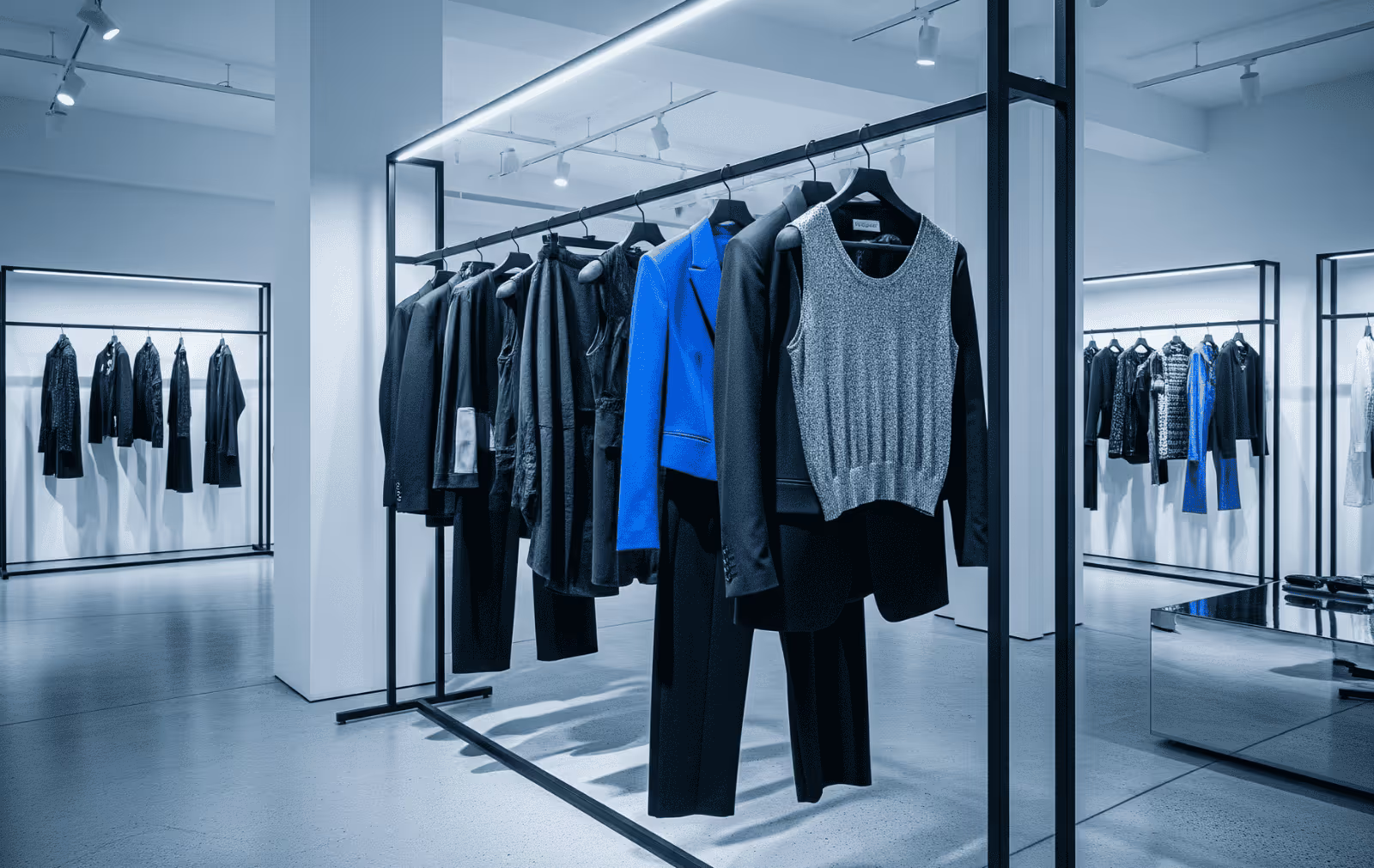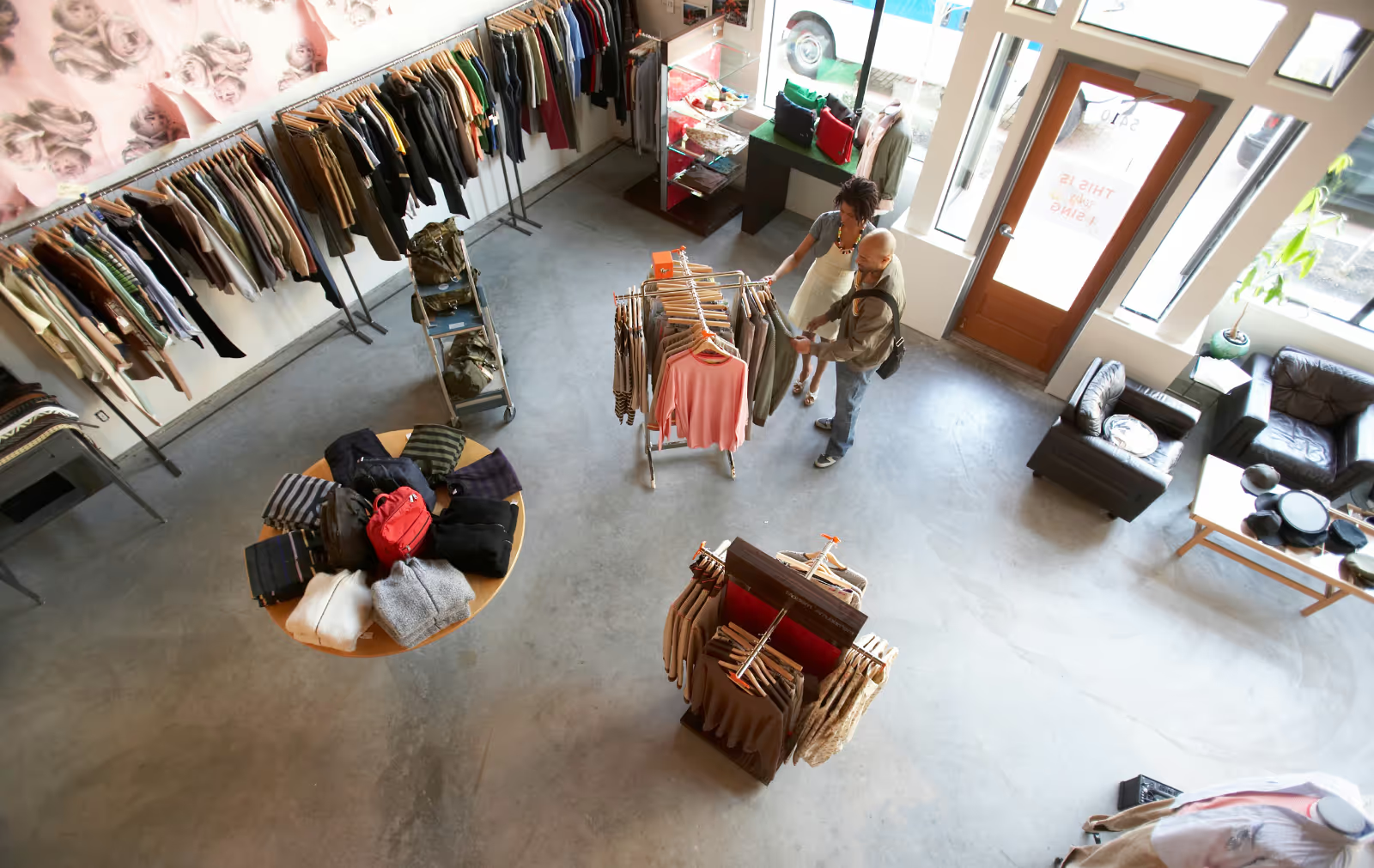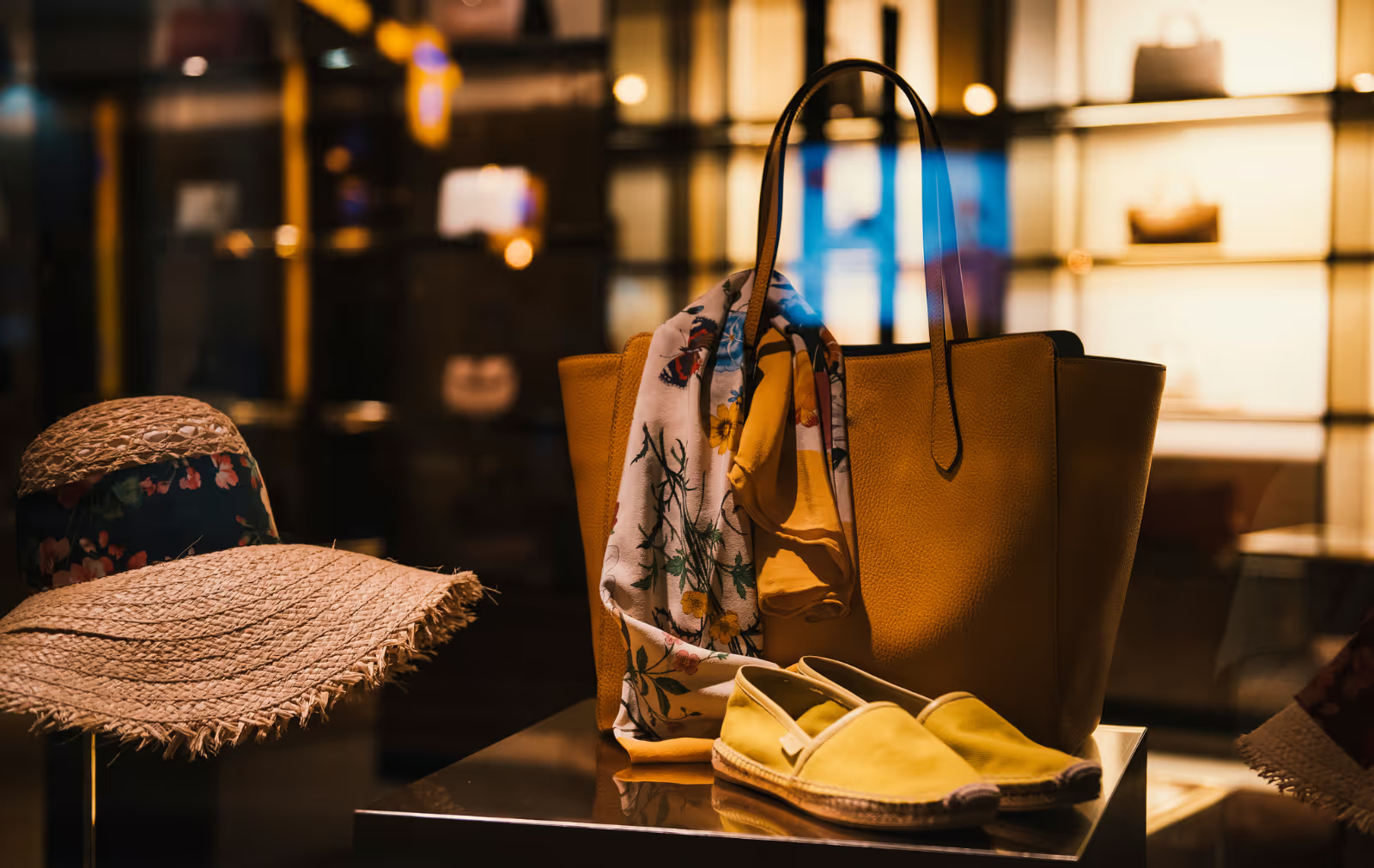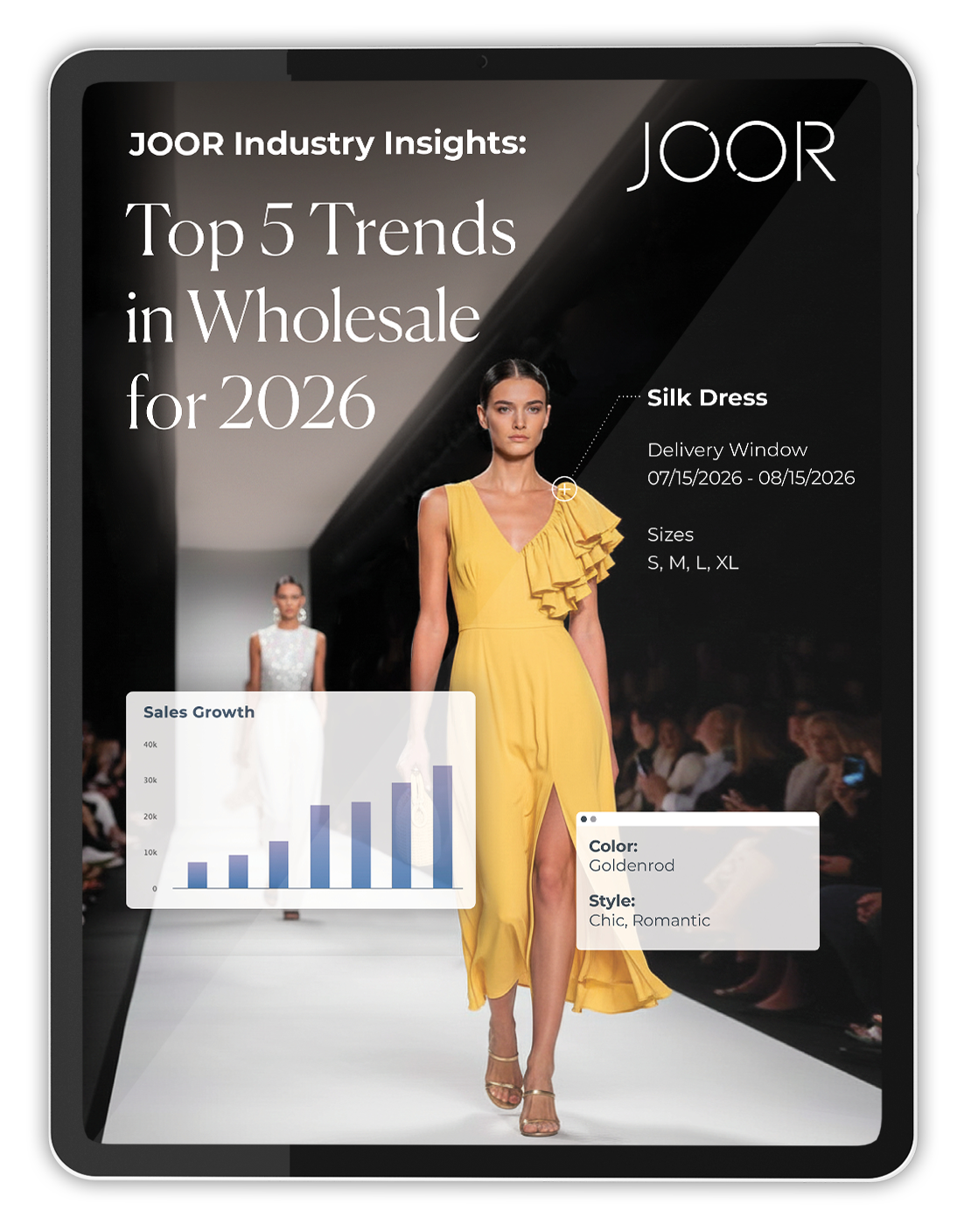Getting Your Clothing Brand into Stores: What You Need to Know
For emerging fashion brands, getting your products into retail stores can be a pivotal step in scaling your business. Whether you're targeting independent boutiques or major department stores, success depends on more than just great design. You need to be retail-ready with a clear brand identity, high-quality products, and the operational capacity to deliver consistently. A strong digital footprint also helps validate your brand’s credibility to retail buyers.
Platforms like JOOR simplify this wholesale process by connecting fashion brands directly with top global retailers helping you pitch smarter, sell faster, and grow sustainably.
Key Takeaways
- Build a cohesive brand identity that aligns with your ideal retail partners
- Research and approach retailers that match your customer base
- Include fulfillment, pricing, and inventory details in your pitch
- Offer polished line sheets and product specs for easy decision-making
- Establish a strong online presence that reflects your brand’s value
How to Approach Retailers and Build Long-Term Store Partnerships

To get your fashion brand into retail stores, start by identifying retailers that match your brand’s identity, pricing tier, and target customer. Research their existing collections, store formats, and shopper demographics. Retail buyers want to know how your clothing line fits their assortment, so be ready with compelling samples, a professional line sheet, and a clear unique selling proposition (USP).
Once your products are on shelves, the real work begins. Building and maintaining strong retail relationships requires responsive communication, timely deliveries, and outstanding customer service. Retailers value brand partners who consistently meet expectations, evolve with market trends, and offer added value through exclusivity, limited drops, or co-marketing opportunities.
A digital wholesale platform like JOOR helps fashion brands streamline this entire process making it easy to connect with retailers, present your line sheets, and manage ongoing wholesale relationships at scale.
Pro Tip:
Always tailor your outreach email or pitch to show the retailer how your collection fills a gap in their current product mix.
Build a Wholesale-Ready Fashion Brand Identity
A strong brand identity is essential if you want your fashion label to stand out in the wholesale market. Retail buyers evaluate more than just your designs, they look for clear positioning, consistency, and alignment with their store’s values and audience. Whether you’re in fashion, accessories, or footwear, your branding must connect emotionally with consumers and professionally with retail partners.
Crafting a memorable story, curating a cohesive aesthetic, and projecting professionalism through digital channels will position your brand as a reliable partner in retail. Tools like JOOR can help amplify your brand to global buyers by showcasing your identity in a sleek, professional wholesale format.
Key Brand Identity Tips for Wholesale Success:
- Tell Your Brand Story: Highlight what sets your brand apart and why it belongs on retail shelves.
- Use Consistent Brand Language: Ensure your tone, visuals, and values align across every touchpoint.
- Build a Strong Digital Footprint: Include a polished website, active social channels, and clear brand assets for wholesale buyers.
- Develop a Marketing Plan: Use influencer partnerships, social campaigns, and email strategies to stay top-of-mind with buyers and consumers alike.
How to Approach Retailers and Secure Store Partnerships
Successfully getting your clothing brand into retail stores starts with a smart, targeted approach. Retail buyers receive countless pitches - yours needs to stand out. From researching ideal stockists to showing up prepared with professional tools, these steps will help you form lasting partnerships with the right retailers.
1. Research and Benchmark Before You Pitch
Study where your brand fits in the market by analyzing retailer assortments, pricing tiers, and competitor placements. Understanding who stocks your rivals helps you tailor your outreach and define your brand’s positioning.
2. Prioritize Independent Retailers That Align with Your Brand
Independent boutiques and specialty stores often look for fresh, differentiated collections. Target retailers whose values, customer base, and merchandising style resonate with your brand’s story.
3. Leverage Line Sheets and Face-to-Face Opportunities
Bring polished line sheets, pricing breakdowns, and product visuals to meetings. Attend trade shows, fashion expos, or showroom events to connect directly with buyers and leave a strong impression.
Pro Tip:
Digital wholesale platforms like JOOR make it easy to present your line sheet, pricing, and brand details professionally in just a few clicks.
How to Pitch Your Clothing Brand to Retail Buyers Effectively

Pitching to retail buyers is more than just showcasing your designs — it’s about proving your brand adds measurable value to their store. A successful wholesale pitch must be tailored, visual, and strategically positioned to meet the buyer’s expectations. Here's how to make your brand irresistible to potential stockists.
1. Personalize Every Pitch for the Retailer You’re Targeting
Avoid generic outreach. Research the retailer’s current assortment, customer base, and brand voice, then customize your pitch to show how your collection fits in and stands out. Call out specific gaps or trends in their store that your brand could help fill.
Example:
“I noticed your boutique stocks minimalist womenswear but lacks size-inclusive loungewear. Here’s how our collection complements your current line-up.”
2. Lead with Your Brand’s Unique Value Proposition
What makes your brand different? Whether it’s ethical sourcing, premium materials, cult social media following, or niche design, call it out clearly. Align your product’s strengths with what that retailer’s customers care about, and back it with data or social proof.
3. Create a Polished Lookbook That Sells Without You Speaking
Your lookbook or digital presentation should speak volumes. Include lifestyle imagery, product details, pricing, and sizing info in a clean layout. Avoid clutter, ensure consistency, and keep navigation easy whether shared via email or presented in-person.
What Retail Buyers Want to See in Your Wholesale Pitch
A winning sales pitch to retailers must demonstrate how your brand enhances their store’s value and aligns with their customer base. Go beyond just introducing your products, sell the why. Communicate your brand ethos, highlight your most relevant SKUs, and be ready to support your pitch with professional assets.
Key Elements to Include in Your Pitch
- High-Quality Samples: Send your top-performing pieces that represent your brand’s craftsmanship and appeal.
- Social Proof & Press Mentions: Showcase awards, press features, or influencer collaborations to validate popularity and demand.
- Audience Engagement: If your brand has a loyal social media following or customer base, use it as leverage to show potential sell-through.
- Product Details: Share line sheets, pricing, sizing charts, and minimum order info clearly and professionally.
Pro Tip: With JOOR, you can centralize these assets and share them with buyers digitally, streamlining the pitch process from interest to order.
Get Your Operations Retail-Ready for Wholesale Success
Before choosing to sell your merchandise in stores, retailers will want assurance that your logistics and operations for wholesale distribution will ensure a smooth and efficient process for them. Implement a structured ordering process to streamline transactions and ensure timely delivery of products.
Clearly Define Your Wholesale Terms to Build Buyer Confidence
Outline the terms of your wholesale agreements to establish mutual understanding and trust with retailers. Sync your inventory levels with market demands to prevent stockouts and overstock situations.
Leverage real-time data and insights to understand your inventory levels and be able to act nimbly. By managing expectations, meeting order deadlines, and monitoring inventory levels closely, you can establish trust and reliability with retailers in the Apparel, Accessories, Sport, Outdoor, and Footwear industries.
Build Strong Retail Buyer Relationships for Long-Term Success

Providing exceptional customer service to retailers is crucial for building strong and lasting relationships, leading to repeat business and brand loyalty. When looking to expand your fashion or clothing brand into wholesale, it's crucial to ensure that your interactions with store managers are consistent and purposeful. Learn their names, inquire about their needs, and provide excellent customer service to build strong retail relationships.
Stay proactive in addressing any issues promptly and effectively to demonstrate your commitment to the partnership. Seek feedback regularly to continuously improve your services and products.
Building a reputation for being responsive, reliable, and easy to work with won't only retain current buyers but also attract new ones, leading to sustained success in the retail market.
Set a Wholesale Pricing Strategy That Works for You and Your Retailers
Setting the right wholesale pricing strategy is a balancing act, your pricing needs to support your margins while offering enough incentive for retail partners to stock your line. Consistency, competitiveness, and value are critical for building long-term retail partnerships.
Start with Competitive Benchmarking
Research similar brands in your category to understand common markups and buyer expectations. Most retailers expect to double the wholesale price (keystone markup) or aim for a specific margin. Make sure your pricing aligns with industry standards while preserving profitability.
Maintain Pricing Transparency and Consistency
Avoid price undercutting between DTC and wholesale. Keep your in-store and online pricing aligned to maintain retailer trust and avoid channel conflict. This also supports a strong, unified brand perception across touchpoints.
Offer Exclusivity and Strategic Collaborations
Limited-edition collections, seasonal exclusives, or retailer-specific drops can make your brand more attractive to stock. Use exclusivity to build urgency and differentiate your offering, especially when pitching to curated boutiques or luxury retailers.
Highlight Sustainability as a Value Driver
Ethical sourcing and eco-friendly practices aren’t just nice to have - they’re buying factors. Many modern retailers prefer to work with brands that support environmental or social causes. Be upfront about your sustainability credentials as part of your pricing justification and brand story.
Tip: Tools like JOOR help you segment pricing by region, retailer type, and offer digital line sheets with accurate, transparent pricing making it easier to scale your wholesale operations with confidence.
Your Retail Readiness Checklist
Think you’re prepared to get your clothing brand in stores? Before you reach out to retailers, make sure you’ve completed all the tasks on our retail-ready checklist.
- You have a strong brand identity and clear product positioning
- Your linesheets include all relevant pricing and SKU information
- You’ve worked out your logistics and maximum inventory capacity
- You’ve clearly defined your wholesale terms, including MOQs, payment and return policies
- You have created a digital presence and a virtual or physical lookbook
- You know you can deliver orders consistently and on time
Ticked every box? Then you’re all set to secure stockists and wholesale sales.
What To Avoid When Trying To Sell Your Brand to Retail Stores

You now have our roadmap on how to sell wholesale products to retailers to guide you through the next stage of your business journey, but beware of common mistakes many fashion brands make when trying to sell to retailers.
- Avoid focusing only on your bestsellers when pitching to buyers. Remember to stay trend-savvy and keep abreast of the latest market trends and consumer preferences to highlight your competitive edge and ability to tap into the latest fashion trends with your on-trend products.
- Avoid rushing samples in order to show them at your buyer’s pitch. Not paying meticulous attention to quality control for your products, including garments, tags, and packaging, to meet retail stockist standards can result in losing business and also making your brand come across as unprofessional.
- Don’t forget to explore co-op advertising opportunities. Many fashion brands often overlook the chance to maximize their in-store promotional efforts, but this can be a creative way to not only create visually appealing displays but also host events to showcase your brand and increase brand awareness. Willingness to collaborate also makes you much more appealing to retailers.
How To Sell Products to Retailers If You're Not A Clothing Brand

While this guide focuses on fashion and apparel, nearly all of these tips apply broadly to any brand looking to sell wholesale to retailers. Developing a brand identity is a crucial first step for any brand, and all retailers, regardless of industry, should be targeted by you in a strategic manner.
Your pitch to buyers should include your unique selling points and just like fashion brands you will also need to bring samples of your product if possible for the best chance at securing business. Logistics and pricing are key considerations for all brands looking to move into wholesale, and strong relationships are as important for fashion as they are for food, homeware and jewelry brands.
Scale Your Brand Faster with JOOR’s All-in-One Wholesale Platform

Congratulations on taking the necessary steps to get your clothing brand into stores. By focusing on brand development, retailer research, relationship maintenance, market analysis, product presentation, logistics, marketing strategies, and distribution tactics, you have set yourself up for success in today’s competitive retail landscape.
With a strong brand identity and a deep understanding of the market, you're well-equipped to pitch your brand to retailers and secure partnerships that will increase visibility and growth for your apparel line.
Request a demo to discover how JOOR can elevate your brand’s wholesale experience, helping you drive growth and stay ahead of the competition.

Discover the Top 5 Trends in Wholesale for 2026
Related Insights

Why Digital B2B Catalogs are Essential for E-Commerce Businesses
Online catalogs have become a crucial component for retailers and their buyers in an evermore tech reliant industry. Read about how these dynamic product libraries act as comprehensive selling solutions that plug into current buying behaviors.
%2520(2)%2520(1).avif)
8 Ways a B2B Fashion Marketplace Solves Wholesale Scaling Challenges
Learn how a B2B fashion marketplace like JOOR helps your wholesale fashion brand overcome scaling challenges. Maximize resources, build retailer relationships, and enhance distribution to drive growth in the global wholesale fashion market.
%2520(1).avif)
Price Sheets Vs Line Sheets in Wholesale Fashion
Explore the key differences between price sheets and line sheets in wholesale fashion. Optimize product showcasing and sales strategies with clear pricing details and captivating visuals. Enhance buyer experience and streamline ordering process effectively.

The Power of Brand-Retailer Partnerships
Learn how brand-retailer partnerships can be a powerful tool to help drive your fashion company's growth. This guide also details the key elements to consider before engaging in a partnership, and how you can go about making new connections.
%2520copy%25202.avif)
How to Find the Right Independent Retailers For Your Brand
Discover why an independent retailer might be the perfect fit for your brand and learn how to find like-minded, customer-centric connections to expand your wholesale fashion business.
.avif)
How to Pitch to a Fashion Buyer
Uncover how to successfully sell your fashion products to prospective retailers in this step-by-step guide. Here you’ll find everything to include in your wholesale pitch, from your brand story to your linesheets and follow-up strategy.
.avif)


